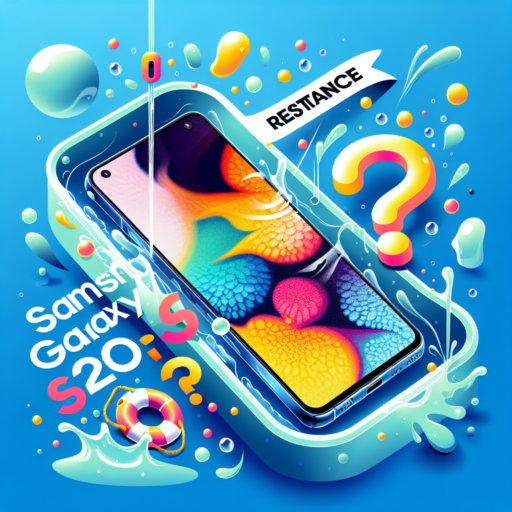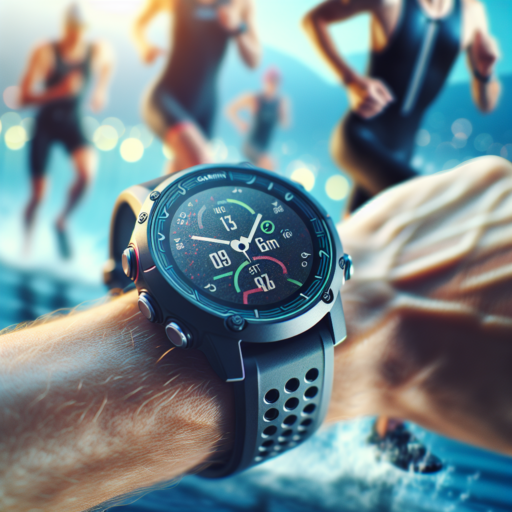Is the Samsung Galaxy S20 Waterproof? Unveiling the Truth
When it comes to understanding the water resistance capabilities of smartphones, the Samsung Galaxy S20 often comes into discussion. The intrigue surrounding its waterproof features is widespread among users who are keen on utilizing their devices in various environments without the fear of water damage. So, let’s delve into the specifics of the Galaxy S20’s design and how it measures up to water exposure.
The Samsung Galaxy S20 boasts an IP68 rating, which is a crucial detail for those curious about its ability to withstand water. This designation indicates that the device is not only dust-resistant but can also handle submersion in water to a certain degree. Specifically, the IP68 rating ensures that the Samsung Galaxy S20 can be submerged in up to 1.5 meters of water for a duration of up to 30 minutes without sustaining damage. It’s an impressive feature that adds a layer of convenience and protection for users.
However, while the IP68 rating is reassuring, it’s essential for users to understand that it does not render the Samsung Galaxy S20 completely waterproof. The term waterproof would imply an absolute defense against water penetration under all circumstances, which is not the case here. Various factors, such as the water’s temperature and the device’s condition over time, can impact its water resistance capabilities. Therefore, while the Galaxy S20 is equipped to handle accidental dips or splashes, it’s advisable to avoid intentionally submerging or exposing the device to water for extended periods.
Understanding Water Resistance: A Closer Look at the Samsung Galaxy S20
When it comes to smartphones, water resistance has become a feature that many consumers prioritize. The Samsung Galaxy S20, with its advanced technology, has piqued the interest of users looking to understand its water resistance capabilities. This feature not only enhances the durability of the device but also provides a sense of security to its users. The Galaxy S20’s water resistance is characterized by its IP (Ingress Protection) rating, which sheds light on how well the device can withstand environmental factors like dust and water.
IP Rating Explained
The IP rating of the Samsung Galaxy S20 is a point of pride and a significant factor in its overall appeal. Specifically, the Galaxy S20 holds an IP68 rating, which is an indicator of the device’s ability to resist dust and water. The ‘6’ in the rating signifies complete protection against dust ingress, ensuring that no particulate matter can enter the phone and interfere with its operation. The ‘8’ signifies the phone’s ability to be submerged in water to a depth of 1.5 meters for up to 30 minutes without sustaining damage. This rating not only speaks to the meticulous engineering behind the Galaxy S20 but also to its readiness to accompany its users through various environments and conditions.
What Does This Mean for Users?
For users, the IP68 rating of the Samsung Galaxy S20 translates to an increased level of interaction and freedom with their device. Activities that would typically pose a risk to a smartphone, such as taking photos by the pool, reading emails in the bath, or navigating a GPS map in the rain, become worry-free with the Galaxy S20. This water resistance capability enables users to integrate their device more seamlessly into all aspects of their daily life, confident in the knowledge that it can withstand accidental water exposure. It’s important for users to remember, however, that while the Galaxy S20 is designed to be water-resistant, it is not completely waterproof, and precautions should still be taken to avoid unnecessary risks.
The discussion around the water resistance of the Samsung Galaxy S20 showcases it as a standout feature among smartphones. With the reassurance provided by its IP68 rating, users can enjoy a broad range of activities without the fear of water damage. This attribute not only reflects Samsung’s commitment to innovation but also enhances the overall user experience by marrying functionality with peace of mind.
IP Ratings Explained: How Does the Samsung Galaxy S20 Stack Up?
When considering the purchase of a new smartphone, understanding its durability, particularly in terms of water and dust resistance, is crucial. For the Samsung Galaxy S20, its IP rating is a key feature that deserves a closer look. IP, or ‘Ingress Protection’ ratings, are defined by the International Electrotechnical Commission (IEC) and provide a standardized measure of how well devices are protected against the entry of solid particles and liquids.
The Samsung Galaxy S20 boasts an impressive IP68 rating. This designation has two components: the first digit (6) indicates the level of protection against solid objects, including dust, with 6 being the highest rate of protection, meaning it is completely dust-tight. The second digit (8) refers to the device’s ability to withstand water. In the case of the Galaxy S20, the 8 signifies that it can survive immersion in water at depths of up to 1.5 meters for up to 30 minutes.
What This Means for Users
This robust IP rating translates into significant peace of mind for Samsung Galaxy S20 users. Whether you’re caught in a rainstorm, spend time at the beach, or accidentally drop your phone in water, the IP68 rating indicates a high level of defense against these common accidents. It liberates users from the constant worry about water damage, which is a leading cause of smartphone failures.
Understanding the IP rating, especially in a high-end smartphone like the Samsung Galaxy S20, can influence buying decisions. It is clear that Samsung has prioritized durability and user confidence in designing this flagship device. As technology continues to integrate deeply into everyday life, the resilience of devices becomes increasingly important. Therefore, the Galaxy S20’s IP68 rating is not just a technical specification; it is a testament to Samsung’s commitment to quality and reliability in the demanding world of mobile technology.
Maximizing Your Samsung Galaxy S20: Tips for Water and Dust Resistance
Your Samsung Galaxy S20 is a marvel of technology, designed not just for performance but also to withstand the elements. Water and dust resistance are key features that keep your device in top-notch condition, ensuring it can face almost anything daily life throws at it. Understanding how to maximize these aspects can enhance your S20’s lifespan and maintain its functionality. Here are essential tips to help you make the most out of your phone’s durability features.
Understanding the IP Rating
Your Samsung Galaxy S20 boasts an IP68 rating, indicating high levels of resistance to both dust and water. This means your device can be submerged in up to 1.5 meters of water for up to 30 minutes without suffering damage. However, it’s crucial to understand what this rating does and doesn’t cover, as certain types of water and activities could still pose risks. Regularly checking the integrity of your phone’s seals can help maintain this resistance level.
Maintaining Your Device’s Resistance
- Avoid Direct Water Jets: While your S20 can handle immersion, it’s still vulnerable to high-pressure water jets. Avoid directly exposing your device to powerful sprays, which can force water into areas it shouldn’t go.
- Regular Cleaning: Dust and small particles can accumulate and compromise the water and dust resistance over time. Gently wiping your device with a soft, damp cloth can help maintain its integrity.
- Check Seals and Coverings: Regularly inspect the seals around your phone’s ports and coverings to ensure they remain intact. Even minor damage can significantly reduce water and dust resistance.
Avoiding Common Mistakes
Three common mistakes often undermine the water and dust resistance of the Galaxy S20. First, exposing your phone to salt water or chlorinated pools without proper rinsing and drying can damage its protective features. Secondly, failing to dry your device completely before charging it can cause short circuits. Lastly, not covering ports securely before exposure to water or dust can lead to accumulation in areas that are hard to clean, risking lasting damage to your phone.
Comparing the Samsung Galaxy S20 to Other Waterproof Smartphones
When evaluating the Samsung Galaxy S20 in the context of waterproof smartphones, it’s essential to consider how it stacks up against its competitors. The Galaxy S20, with its IP68 rating, promises durability and resistance to dust and water up to 1.5 meters for 30 minutes. This feature positions it as a compelling choice for users who prioritize device protection against environmental conditions.
Water Resistance Across Brands: Assessing waterproof capabilities, the Galaxy S20 is on par with top contenders like the iPhone 12 and the OnePlus 8 Pro, both of which also boast an IP68 rating. However, the real-world application of these ratings can vary. Factors such as the impact of saltwater, chlorinated pools, and exposure duration can influence the longevity and effectiveness of the waterproof seal.
Design and Durability: Besides water resistance, the design and build quality are paramount. The Galaxy S20 features a sleek glass and aluminum body that’s both stylish and functional, providing a comfortable grip while ensuring durability. In comparison, other waterproof smartphones might offer similar materials but differ in ergonomics and aesthetics, which could sway potential buyers based on personal preference.
Real-World Tests: How Waterproof is the Samsung Galaxy S20?
In the age of technology where our smartphones accompany us almost everywhere, the water resistance of devices like the Samsung Galaxy S20 has become a crucial feature for users. This discussion delves into real-world tests that explore the waterproof capabilities of the Samsung Galaxy S20, offering insights into how this device holds up against everyday water encounters.
Firstly, it’s essential to note that the Samsung Galaxy S20 is advertised with an IP68 rating. This means it is theoretically capable of surviving submersion in up to 1.5 meters of water for approximately 30 minutes. Real-world tests conducted by various tech enthusiasts and reviewers have put this claim to the test. These experiments often involve submerging the device in water for the specified time or even slightly longer to observe any potential water damage signs.
Moreover, aside from controlled environment tests, real-life scenarios where the Samsung Galaxy S20 was accidentally dropped in water bodies like pools, toilets, and puddles have shown impressive resilience. Owners and testers have shared anecdotes of the phone surviving these incidents without any long-term damage to its functionality or performance. However, it’s important to remember that while the device is water-resistant, consistent exposure to water or high-pressure water jets might still pose risks.
No se han encontrado productos.
Protecting Your Samsung Galaxy S20 from Water Damage
Protecting your Samsung Galaxy S20 from water damage is crucial for maintaining its longevity and performance. Though this model is designed with a degree of water resistance, categorized under IP68, it’s imperative to remember that this doesn’t grant immunity against all forms of liquid exposure. To ensure your device remains safe and functional, adopting preventative measures is key.
Understanding IP68 Water Resistance
The IP68 rating of the Samsung Galaxy S20 offers a general assurance against dust and temporary submersion in water. Specifically, it means the device can withstand submersion in up to 1.5 meters of freshwater for up to 30 minutes. However, this protection does not extend to all liquids, temperatures, or conditions. For example, exposure to salt water, chlorinated pools, and soapy water can significantly compromise the integrity of your device’s water resistance over time.
Preventative Measures to Avoid Water Damage
- Avoid exposing your Samsung Galaxy S20 to water whenever possible, especially liquids other than fresh water.
- Invest in a waterproof case for scenarios where contact with water is unavoidable. Ensure the case is specifically designed for the Galaxy S20 to guarantee a proper fit and maximum protection.
- Regularly inspect your device for any signs of wear or damage, particularly around the seals and casing. Even minor damage can reduce the effectiveness of its water-resistant properties.
- Should your phone come into contact with water, remove it from the liquid immediately and dry it thoroughly with a soft, lint-free cloth. Avoid using heat or external sources of air flow, as this can push moisture further into the device.
The Science Behind Waterproof Phones: Technologies Making the Samsung Galaxy S20 Safe
Understanding IP Ratings: The Benchmark of Water Resistance
The journey to making the Samsung Galaxy S20 waterproof begins with understanding Ingress Protection (IP) ratings. These ratings are essential to measuring a device’s resistance against both solids and liquids. For the Galaxy S20, the focus is on its IP68 rating. This specific classification signifies that the device can withstand up to 1.5 meters of freshwater for up to 30 minutes. The ‘6’ indicates total dust resistance, while the ‘8’ represents the phone’s ability to resist water intrusion. The application of this rating has set a benchmark in developing waterproof technologies for smartphones.
Sealant Materials: Ensuring a Watertight Structure
To achieve such an impressive IP rating, the Samsung Galaxy S20 employs advanced sealant technologies. Manufacturers use a combination of rubber gaskets and adhesive seals around critical components like the screen, battery cover, and ports. This meticulous sealing process ensures that no water can penetrate into the device’s internals, safeguarding its electrical components from water damage. These sealant materials have been rigorously tested to maintain their integrity and durability over the phone’s lifespan, showcasing a significant advancement in waterproofing technology.
Pressure Equilibrium and Water Damage Prevention Measures
Besides external sealing, the Samsung Galaxy S20 includes innovative design features aimed at preventing water damage from the inside out. One such technology is the use of pressure valves which help maintain an equilibrium between the internal and external pressures, thus enhancing the phone’s waterproof capabilities. Additionally, special water-resistant coatings are applied to the device’s internal components, providing an extra layer of protection against moisture. Together, these measures work in concert to ensure the Galaxy S20 remains safe and functional, even when briefly submerged or exposed to water.
Warranty and Water Damage: Know Your Samsung Galaxy S20 Coverage
Understanding the specifics of your Samsung Galaxy S20’s warranty, especially when it comes to water damage, is critical for every user. The standard Samsung warranty typically covers manufacturing defects and hardware malfunctions under normal use conditions. However, it’s crucial to recognize that water damage may fall into a gray area, depending on how the damage occurs.
Is Water Damage Covered Under the Samsung Galaxy S20 Warranty?
While the Samsung Galaxy S20 boasts an IP68 rating, indicating resistance to water and dust, this doesn’t guarantee immunity to water damage under all circumstances. The warranty for your Samsung Galaxy S20 generally does not extend to damage caused by liquids. This means, if your device suffers from exposure to water beyond the conditions it was designed to withstand, the repair or replacement costs might not be covered under warranty. Users should be aware that the IP68 rating is based on specific conditions, and deviation from these might void the warranty regarding water damage.
Protecting Your Samsung Galaxy S20 from Water Damage
To minimize the risk of water damage, it’s advisable to avoid exposing your Samsung Galaxy S20 to extreme conditions not covered by the IP68 rating. This includes submersion in water beyond the depth and duration specified by Samsung, as well as exposure to liquids other than fresh water, such as salt water, chlorinated water, or beverages. Regularly checking for any physical damage that could compromise the device’s water resistance is also recommended. In essence, being cautious and mindful of the environments in which you use your device can help maintain its integrity and operational performance.
FAQs: Answering Your Top Questions About Samsung Galaxy S20’s Water Resistance
When it comes to mobile technology, the water resistance feature has become a must-have for many users. The Samsung Galaxy S20 claims a noteworthy spot in this category, but it’s natural to have questions about how far this resistance goes. Below, we explore the most common inquiries regarding the water resistance capabilities of the Samsung Galaxy S20.
What is the water resistance rating of the Samsung Galaxy S20?
The Samsung Galaxy S20 comes with an IP68 rating. This rating signifies that the device can withstand submersion in fresh water to depths of up to 1.5 meters for up to thirty minutes. While this rating provides a general idea of the phone’s resistance capabilities, it’s essential to note that real-world conditions can vary, and precautions should still be taken to avoid water damage.
Can I use my Samsung Galaxy S20 for underwater photography?
Although the Samsung Galaxy S20’s IP68 rating permits brief submersion, it’s crucial to understand that using the device for underwater photography comes with risks. Activities like pressing buttons underwater or exposing the device to water pressure beyond shallow depths can compromise its seals and water resistance integrity. It’s recommended to use waterproof cases designed specifically for underwater photography to ensure your device remains protected.
In summary, while the Samsung Galaxy S60 offers considerable protection against water damage through its IP68 rating, it’s not invincible. It’s well-equipped for accidental drops in water or light splashing but think twice before taking it for a swim or using it as your underwater camera without additional protection.




